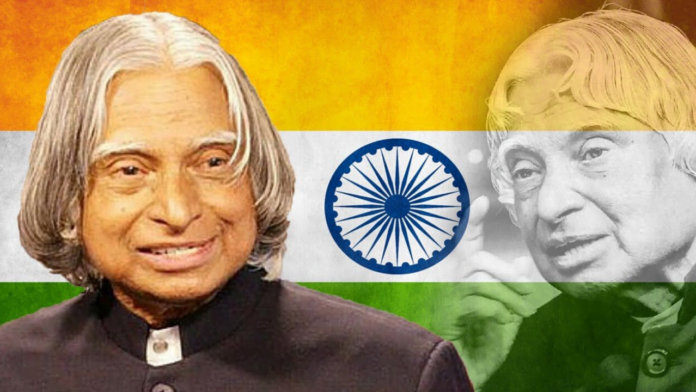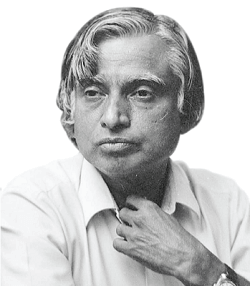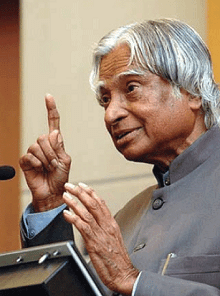APJ Abdul Kalam’s Biography 2023
APJ Abdul Kalam’s Biography 2023:– Some life stories aren’t just great but are alleviation stories for the world. Many people die, but their great morals and names noway leave the world; APJ Abdul Kalam is one of them. The top most scientist of India, Dr APJ Abdul Kalam, was the former President of India and played a major part in developing guard lore’s similar as dumdums and nuclear munitions in India. His full name was Avul Pakir Jainulabdeen Abdul Kalam; he was a member of DRDO( Defense Research and Development Organization) and Indian Space Research Organization( ISRO) and was named the” missile Man of India”.
APJ Abdul Kalam’s Biography 2023
APJ Abdul Kalam was an Indian scientist, politician, and author who served as the 11th President of India from 2002 to 2007. He was born on October 15, 1931, in Rameswaram, Tamil Nadu, India.
Kalam graduated in drugs frost. Joseph’s College, Tiruchirappalli in 1954 and went on to study aerospace engineering at Madras Institute of Technology. He joined the Defense Research and Development Organization( DRDO) as a scientist in 1958 and latterly moved to the Indian Space Research Organization( ISRO).
Kalam played a crucial part in India’s mercenary space program and military missile development. He served as the design director of India’s first satellite launch vehicle, SLV- III, which successfully stationed the Rohini satellite in near- earth route in July 1980.
Kalam was known as the ” Missile Man of India” for his work on the development of ballistic missile technology in India. He was a crucial figure in the development of the Agni and Prithvi dumdums, which are now part of India’s strategic magazine.
Kalam was also a fat pen and penned several books, including ” bodies of Fire An Autobiography,”” Burned Minds Unleashing the Power Within India,” and” My Journey Transforming Dreams into conduct.”
Early Life of APJ Abdul Kalam’s Biography 2023
Avul Pakir Jainulabdeen Abdul Kalam, popularly known as APJ Abdul Kalam, was born on October 15, 1931, in Rameswaram, Tamil Nadu, India. He was the youthful of five siblings in a Tamil Muslim family. His father, Jainulabdeen, was a boat proprietor, and his mama, Ashiamma, was a housewife.
Kalam’s early education was in Rameswaram, where he studied at the Schwartz Advanced Secondary academy. He was an average pupil but showed a keen interest in wisdom and mathematics. Kalam’s father was also interested in wisdom and encouraged him to study these subjects.
In 1950, Kalam moved to Tiruchirappalli to study attest. Joseph’s College, where he completed his bachelorette’s degree in drugs in 1954. He also went on to study aerospace engineering at the Madras Institute of Technology( MIT) and completed his master’s degree in 1957.

A P J Abdul Kalam’s as a Scientist
In 1958, Kalam joined the Defence Research and Development Organisation( DRDO) as a scientist. His original work was on developing a hovercraft for the Indian Army.
In 1963, Kalam joined the Indian Space Research Organization( ISRO), where he played a crucial part in India’s mercenary space program. Kalam was appointed the design director of India’s first satellite launch vehicle, SLV- III, in 1970. The SLV- III was a three- stage rocket designed to place satellites in low earth route.
On July 18, 1980, the SLV- III successfully stationed the Rohini satellite in near- earth route. This was a significant achievement for India’s space program and marked the morning of a new period in space technology in the country.
Kalam’s coming big design was the development of the Integrated Guided Missile Development Programme( IGMDP). The program aimed at developing five missile systems for the Indian Armed Forces, including the Agni and Prithvi dumdums.
Kalam played a crucial part in the development of the missile systems and latterly known as the” Missile Man of India.” Kalam was appointed the principal scientific counsel to the Government of India in 1992. He served in this part until 1999, where he advised the government on colorful scientific and specialized matters.
In 1998, India conducted its first nuclear tests, and Kalam played a crucial part in the development of the nuclear program. Kalam’s scientific career gauged over four decades, during which he made significant benefactions to India’s space and missile technology programs.
He awarded multitudinous awards and honors for his work, including the Padma Bhushan(1981), the Padma Vibhushan(1990), and the Bharat Ratna(1997).
Political Career of APJ Abdul Kalam’s Biography 2023
In 2002, Kalam nominated for the administration of India by the National Democratic Alliance(NDA) government.
His nomination supported by all major political parties, and he was tagged as the 11th President of India on July 25, 2002.
Kalam the first scientist and the first bachelorette to be tagged as the President of India. As President, Kalam concentrated on promoting education, particularly in pastoral areas, and on expanding India’s space program.
He also supported for the development of sustainable energy and technology to help India come a advanced country. Kalam known for his simplicity and approachability as President.
He continued to work on colorful scientific and specialized systems while serving as President. He’d frequently meet with scholars and youthful people to inspire them to pursue careers in wisdom and technology.
Legacy and Honors of APJ Abdul Kalam’s Biography 2023
APJ Abdul Kalam extensively regarded as one of India’s most prominent scientists and public numbers. His benefactions to India’s space and missile technology programs have helped establish the country as a major player in the global aerospace assiduity.
Kalam was also a champion of education and encouraged youthful people to pursue careers in wisdom and technology. Kalam’s heritage has been recognized in colorful ways since his death.
Kalam legacy has been honored in various ways since his death. The Indian government declared his birthday, October 15, as “World Students’ Day” in 2010 to honor his dedication to education. The DRDO also named a missile after Kalam, the “Agni V” missile, in his honor. The missile is a testament to Kalam’s contribution to India’s missile technology program.
Conclusion
APJ Abdul Kalam was a scientist, statesman, and visionary who devoted his life to the development of India. He made significant benefactions to India’s space and missile technology programs and inspired youthful people to pursue careers in wisdom and technology. Kalam’s heritage continues to inspire people around the world to conjure big and work towards making those dreams a reality.




